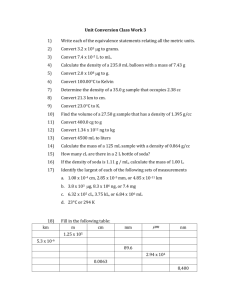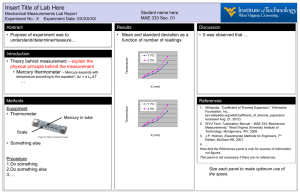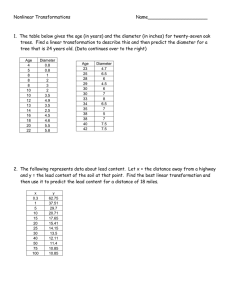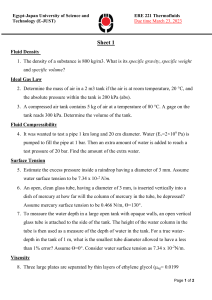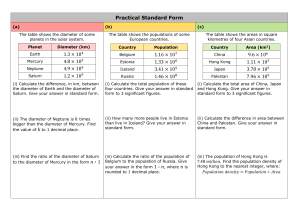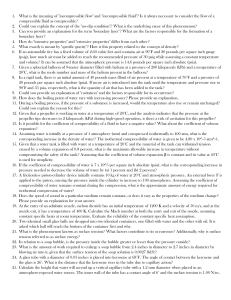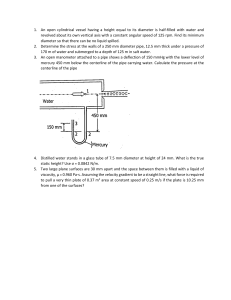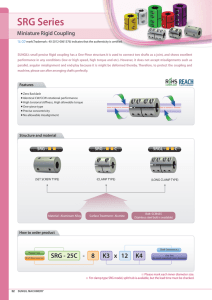Show all work.
advertisement
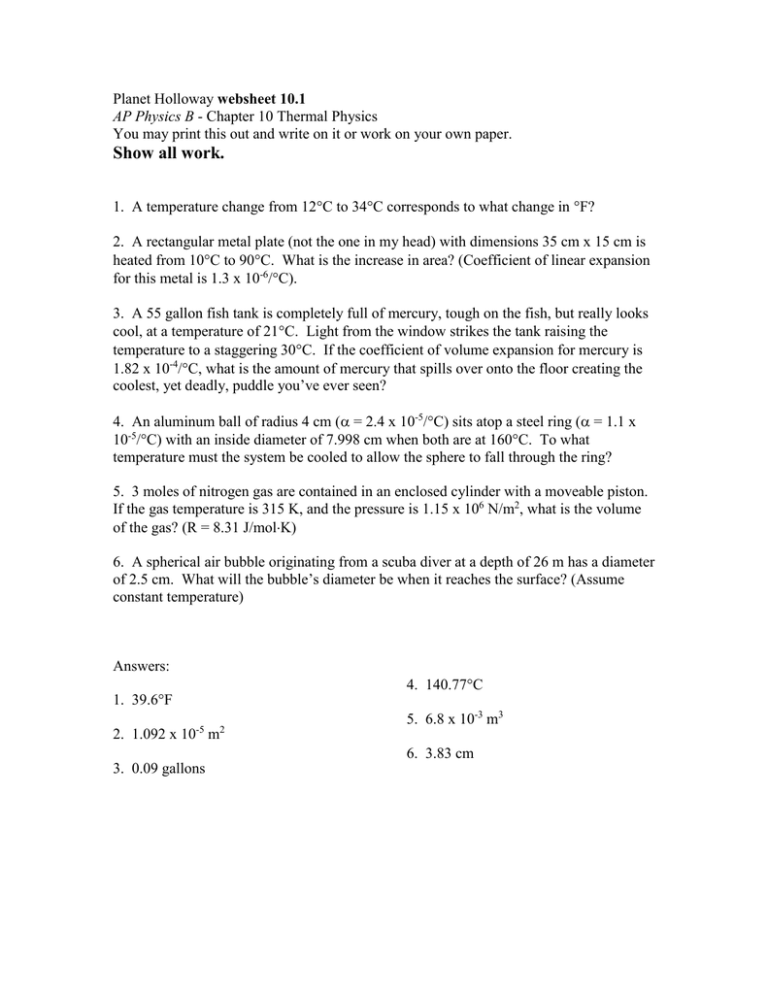
Planet Holloway websheet 10.1 AP Physics B - Chapter 10 Thermal Physics You may print this out and write on it or work on your own paper. Show all work. 1. A temperature change from 12C to 34C corresponds to what change in F? 2. A rectangular metal plate (not the one in my head) with dimensions 35 cm x 15 cm is heated from 10C to 90C. What is the increase in area? (Coefficient of linear expansion for this metal is 1.3 x 10-6/C). 3. A 55 gallon fish tank is completely full of mercury, tough on the fish, but really looks cool, at a temperature of 21C. Light from the window strikes the tank raising the temperature to a staggering 30C. If the coefficient of volume expansion for mercury is 1.82 x 10-4/C, what is the amount of mercury that spills over onto the floor creating the coolest, yet deadly, puddle you’ve ever seen? 4. An aluminum ball of radius 4 cm ( = 2.4 x 10-5/C) sits atop a steel ring ( = 1.1 x 10-5/C) with an inside diameter of 7.998 cm when both are at 160C. To what temperature must the system be cooled to allow the sphere to fall through the ring? 5. 3 moles of nitrogen gas are contained in an enclosed cylinder with a moveable piston. If the gas temperature is 315 K, and the pressure is 1.15 x 106 N/m2, what is the volume of the gas? (R = 8.31 J/molK) 6. A spherical air bubble originating from a scuba diver at a depth of 26 m has a diameter of 2.5 cm. What will the bubble’s diameter be when it reaches the surface? (Assume constant temperature) Answers: 4. 140.77C 1. 39.6F -5 2. 1.092 x 10 m 2 5. 6.8 x 10-3 m3 6. 3.83 cm 3. 0.09 gallons

